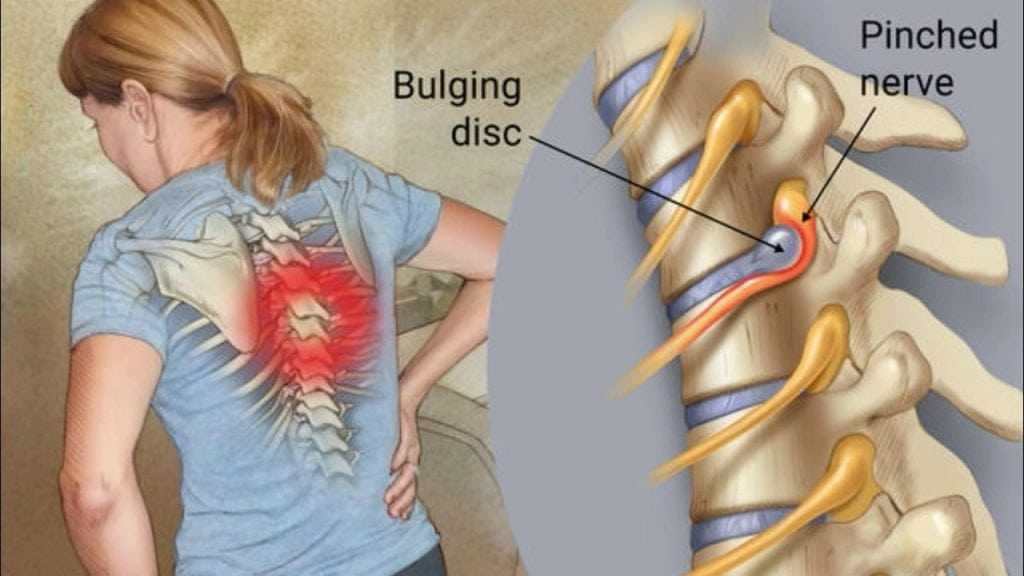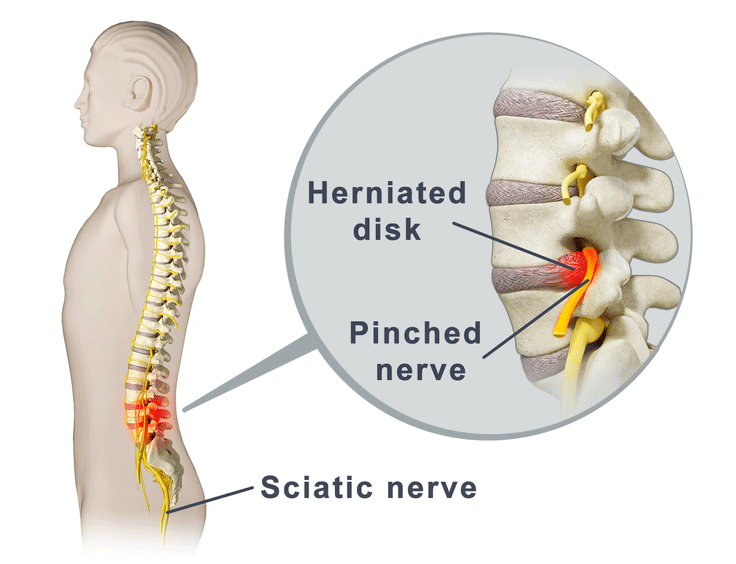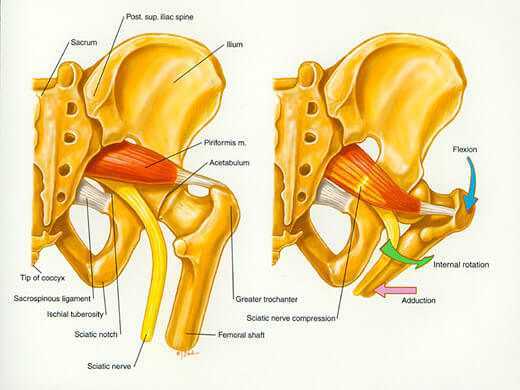A Pinched Nerve In The Back Is Very Debilitating

When you have pain in your back, it’s never any fun. You may have a dull, nagging pain. You might not even be able to move around very much. A back pain can be caused by a number of things, but the feeling is usually the same. It hurts!
One of the main reasons for back pain is a pinched nerve in your back. A pinched nerve can be caused by a number of things. Most commonly it is either caused by a bulging disc, a bone spur, or inflamed tissue. A pinched nerve can occur anywhere along the spinal column. When you have one, you may experience pain, tingling, numbness, or all three.

Definition of a Nerve
A nerve is a cord-like structure that conveys information through electrochemical impulses for both motor and sensory skills. In simpler terms, nerves carry electrical signals from the brain to the body and the body to the brain.
Definition of a Pinched Nerve
A pinched nerve is a nerve that has been damaged or injured by pressure or compression, and therefore is unable to properly conduct its signal.
How Do You Get A Pinched Nerve
You can get a pinched nerve by any of the following things:
- Extra body weight
- Muscle strain
- Overuse of a muscle
- Scar tissue formation after surgery
- Cysts
- Tumors
- Bad posture

Symptoms of a Pinched Nerve
You may experience one or more of the following symptoms:
- lower back pain
- muscle weakness
- muscle fatigue
- pain radiating along the entire nerve
- numbness
- tingling
The most common pinched nerve is the sciatic nerve. The sciatic nerve is the widest and longest nerve in the entire body. It runs from the lower back, down the buttocks, and through the leg. You will most often have a shooting pain that runs from your very low back, down through your thigh and even down the rest of your leg to your foot. This type of pain (caused by a compression of the sciatic nerve) is called Sciatica.

Major causes of Sciatica include:
Spinal Disc Herniation -medical condition that affects the spine in which a tear in the outer fibrous ring of an intervertebral disc allows the soft, central portion to bulge out.
Degenerative Disc Disease -degeneration of the intervertebral disc of the spine.
Lumbar Spinal Stenosis -medical condition in which the spinal canal narrows and compresses the spinal cord.
Spondylolisthesis -anterior or posterior displacement of a vertebra or vertebral column in relation to the vertebrae below.
Piriformis Syndrome -neuromuscular disorder that occurs when the sciatic nerve is compressed by the piriformis muscle.
Minor causes of Sciatica include:
- Pregnancy
- Muscular hypertension
- Coughing too hard
- Sneezing too hard
Sciatica Exercises
If you have Sciatica, there are several exercises that you can try to relieve the pain.
- Hamstring stretch
- Lay on your stomach. Raise up on your elbows to lift back slightly.
- Lay on your stomach. Raise up on your hands, keeping back muscles relaxed, to lift back. Hips should remain touching the floor.
- Standing backward bend- Stand up, put your hands on your hips, slowly bend backward.
- Lay on your stomach. Clasp your hands behind your back and try to lift your chest off the floor.
- Lay on your stomach. Lift your left leg and your right arm at the same time. Hold for 10 seconds. Lift your right leg and your left arm at the same time. Hold for 10 seconds.
- Lay on your back. Tighten your abs and then lift one leg at a time as high as you can. Hold it for 10 seconds. Do the other leg.
- Lay on your back. Place your hands behind your knees and pull your knees to chest. Hold for 10 seconds.
- Sit on your knees and reach your hands forward to touch the floor. This will put a big curve in your back, allowing it to stretch.
10. Lay on your back. Raise your hips off the floor and hold for 10 seconds.
11. Lay on your back with your knees bent and your arms straight up in the air. Raise your left leg (still keeping it bent) as you lower your right arm behind you. Now do your right leg and left arm.
12. Lay on your stomach. Lift your right leg off the ground and hold for 10 seconds. Now lift your left leg off the ground and hold for 10 seconds.
Treatment Options
Treatment for a pinched nerve may include:
- Rest
- Massage
- Cold packs
- Heat packs
- Exercise
- Anti-inflammatory medicine
- Temporary back brace
If these treatment options do not work for a pinched nerve in your back, you can see a doctor. He or she will most likely first prescribe a corticosteroid injection. If the symptoms are not alleviated, it may be possible to have surgery to take care of the problem.
If the pinched nerve in your back is caused by Sciatica and you have the following symptoms as well, you will need to seek treatment right away, as they may indicate a serious injury to the sciatic nerve.
- Loss of sensation in the legs
- Inability to control bladder and bowel
- Progressive leg weakness





